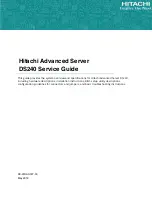
Operating Instructions
SIMip
Release version/date: R1.6 / March 2022
© 2001-2022 TAPKO Technologies GmbH
Im Gewerbepark A15, 93059 Regensburg, Germany
Details, modifications and corrections may be subject to change without notice. TAPKO gives no warranty for the accuracy of the document. All rights reserved.
Product description
Connectors, buttons and LEDs description
With the SIMip data server, IP products that were not originally intended for
KNX connection can be connected to KNX. Several non-KNX devices with
suitable IP connectivity (TCP/IP) can become KNX-controlled. SIMip hereby
serves as extension for the connected IP unit.
SIMip supports up to 1024 objects. Operating modes RAW Mode, Inter-
operability Mode and Transparent Mode are available. The KNX-certified
communication system for conversion of KNX datapoint types is contained.
Properties of every group object can be configured separately. With a short
press on the Function button the IP device(s) linked to SIMip can be
disconnected. With a long button press SIMip can be reset to default settings.
SIMip is shown in the network. With a browser a comfortable front-end can be
accessed to read out device settings, remotely activate functions (Progr. Mode,
Linkage Reset) and download the IP configuration data. Also, the integrated
bootloader function enables remote firmware updates via IP/Ethernet.
SIMip is a rail-mounted device for installation in distribution boards on 35 mm
DIN rails. Supplied by the KNX bus line, the device does not require an
additional power supply. IP devices can be connected by a standard RJ45
connector directly, and also via Ethernet networks.
Requirements of Directives EMC, RoHS and LVD are met. Standards for
residential, commercial, and industrial environments are fulfilled. The full text of
the EU declaration of conformity is available at the following internet address:
State IP
green:
IP connection OK
orange:
Factory Reset
State KNX TP
green:
KNX connection OK
orange:
Linkage Reset
Telegram traffic IP
green (blinking):
Telegram traffic extent
Telegram traffic KNX TP
green (blinking):
Telegram traffic extent
red:
Transmission error
IP Linkage
green:
IP device(s) connected
<off>:
No linkage
Ethernet connector
Operating Mode
green:
RAW/Interoperability Mode
red:
Transparent Mode
Function button
Programming button
Programming LED
red:
Programming Mode active
KNX TP connector
Technical specifications
Power input
Power supply:
Current consumption:
Housing
Dimensions (HxWxD):
Mounting (IEC60715):
Width in space units:
KNX bus connection:
IP connector:
Weight:
Environmental conditions
Operating temperature:
Storage temperature:
Ambient humidity:
21…30 V DC SELV
< 20 mA
90 x 36 x 71 mm
35 mm top-hat rail (TH35)
2 modules at 18 mm
KNX connector (red/black)
Ethernet (RJ45, female)
68 g
-
5…45 °C
-20...60 °C
5…93 %
(non-condensing)
Electrical safety
Pollution degree (IEC60664):
Protection type (IEC60529):
Protection class (IEC61140):
Overvoltage category (IEC60664):
Approbation (ISO/IEC14543-3):
CE Marking
EU Directives:
Standards:
2
IP20
III
II
KNX-certified
LVD
(2014/35/EU)
EMC
(2014/30/EU)
RoHS
(2011/65/EU)
EN50581
EN61000-6-2/-3
EN IEC 62368-1
EN IEC 63044-5-1/-2/-3
Mounting, commissioning and safety notes
Installation and maintenance
•
After connection to the KNX bus system, the device works with its
default settings as intended
•
Warning
: Do not connect to 230 V. The device is supplied by the KNX
bus and does not require any additional external power supply
•
The device may only be installed and put into operation by a qualified
electrician or authorized person
•
For planning and construction of electric installations the appropriate
specifications, guidelines and regulations in force of the respective
country have to be complied
•
For mounting use an appropriate equipment according to IEC60715
•
Installation on a 35 mm DIN rail (TH35)
•
Connect the KNX bus line as for common KNX bus connections with a
KNX bus cable, to be stripped and plugged into a KNX TP connector
•
Do not damage electrical insulations during connecting
•
Installation only in dry locations
•
Accessibility of the device for operation and visual inspection must be
provided
•
For configuring, use the ETS
•
The housing must not be opened
•
Protect the device from moisture, dirt and damage
•
The device needs no maintenance
•
If necessary, the device can be cleaned with a dry cloth
•
In the case of damage (at storage, transport) no repairs may be carried
out by unauthorized persons
•
Configuration details and ETS database:
1
2
3
4
5
A
6
B
C
7
D




















